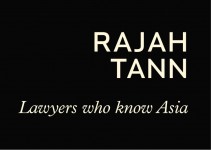Introduction
In the event of a motor accident, the parties involved often seek indemnity from their motor insurers. Therefore, in court matters, insurers typically take over conduct of the proceedings.
As between motor insurers in Singapore, the allocation of liability in motor accidents is usually determined according to the Market Agreement (Barometer of Liability) (the “Market Agreement”) signed between the General Insurance Association of Singapore (“GIA”) and various insurers. However, where a claimant is acting in his personal capacity, how will the Court treat the claim and the applicability of the Market Agreement?
This was the question considered in the High Court case of Koh Kow Tee Michael v Lee Ewe Ming Edward [2015] SGHC 60. Here, whilst the Plaintiff commenced the action in his personal capacity, the insurers of the two Defendants conducted the defence on the Defendants’ behalf. One of the insurers applied for a stay of proceedings pending the decision of the GIA regarding the applicability of the Market Agreement. The Court dismissed the application, holding that even if the Market Agreement applied between the insurers, it would not be binding on the Plaintiff.
Brief Facts
Three Lamborghini cars were involved in a chain collision. The first car was driven by the Plaintiff’s sonin- law, while the second and third were driven by the 1st and 2nd Defendants respectively.
The Plaintiff commenced proceedings against the Defendants, in his personal capacity, claiming for, inter alia, the replacement cost of his car quantified at SGD 1.3m. As the Defendants sought indemnity from their insurers, Liberty Insurance (“Liberty”) and AIG Asia Pacific Insurance (“AIG”) conducted the defences of the 1st and 2nd Defendants respectively.
AIG sought a decision from the GIA as to whether Liberty was bound under the Market Agreement to pay the Plaintiff in full. AIG then applied for a stay of the court proceedings pending the GIA’s decision. The Plaintiff and Liberty resisted the application on inter alia the ground that the Market Agreement did not apply. One of the reasons given was that the claim was made by the Plaintiff in his personal capacity and not by his insurer.
Holding Of The High Court
The High Court dismissed AIG’s application for a stay of proceedings, holding that the Market Agreement was only binding upon the insurers and not the Plaintiff. Even if the GIA decided that AIG and Liberty were bound by the Market Agreement and Liberty had to pay the entire claim as between the insurers, it would not resolve the Plaintiff’s claim entirely. The Plaintiff was not a party to the Market Agreement, and could not be bound by or derive any benefit from the Market Agreement.
AIG also submitted that a stay of proceedings would save legal costs if the GIA were to find in AIG’s favour. The Court disagreed as Liberty was still free to contest the Plaintiff’s claim, and AIG could attempt to claim costs against Liberty where such costs were over and above what AIG would have incurred had Liberty agreed from the start that the Market Agreement applied between them. Other arguments canvassed by AIG (for example, that the courts support alternative dispute resolution and that filing a defence to the Plaintiff’s claim would amount to a submission to the Court’s jurisdiction which would in turn mean that AIG had waived its right to have the dispute between Liberty and AIG adjudicated by the GIA adjudicators) were also rejected by the Court.
Concluding Words
The Market Agreement has been instrumental in speeding up claims process by setting out an agreed and structured apportionment of liability between insurers in the case of motor accidents. However, it should be noted that the Market Agreement only binds insurers and not the insureds who are not parties to the same.
Accordingly, the Market Agreement can only determine the rights of contribution as between the insurers, which is separate from the determination of liability as between parties in the underlying claim / court proceedings. Insurers may also wish to refer any issues of liability between / amongst insurers for determination by the GIA prior to the commencement of any court proceedings as the GIA’s determination may have a bearing on how insurers conduct the defence on behalf of their insureds in the underlying claim.
For further information, please contact:
Elaine Tay, Partner, Rajah & Tann
elaine.tay@rajahtann.com
Ying Shuang Wang, Partner, Rajah & Tann
ying.shuang.wang@rajahtann.com





